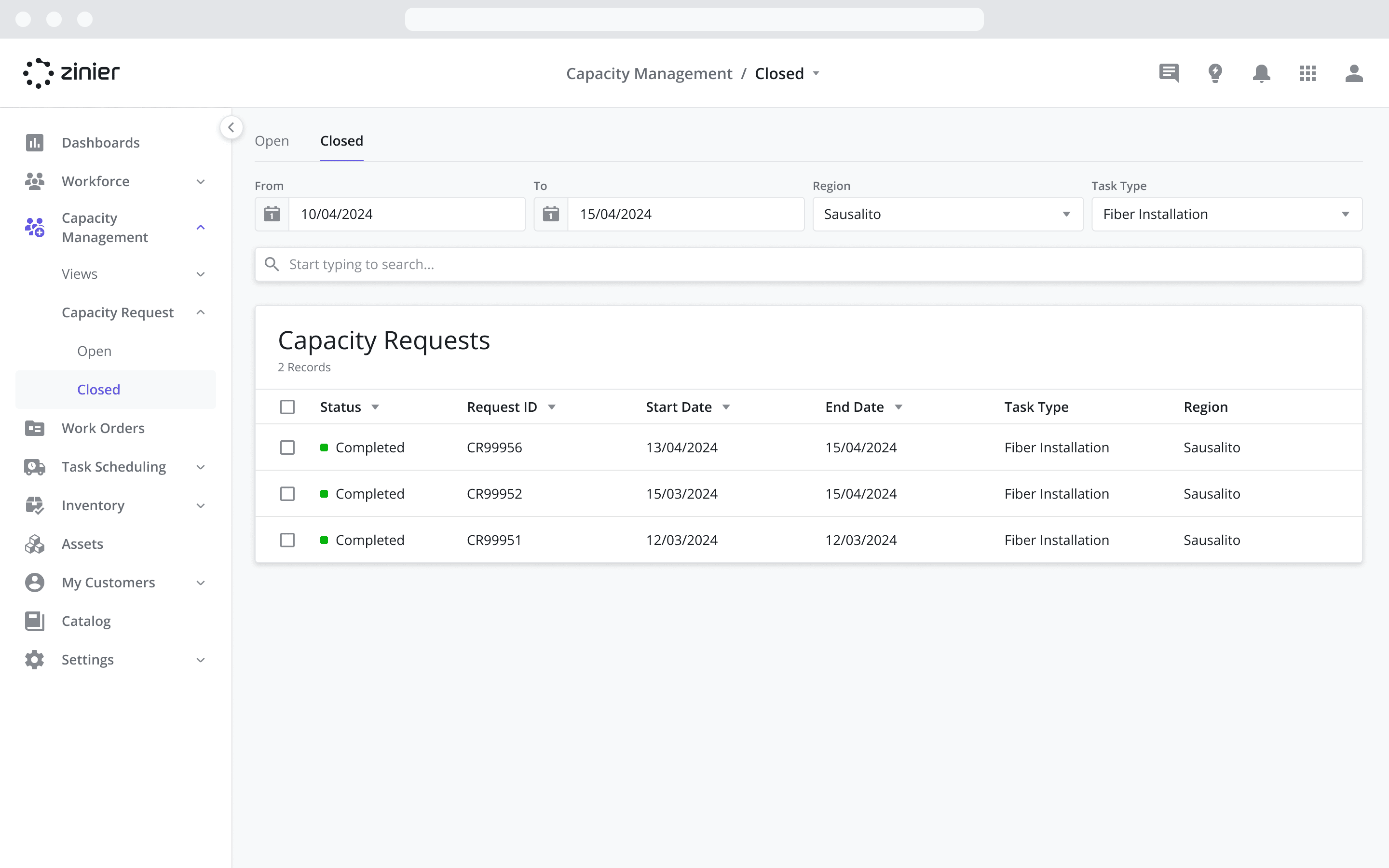Capacity Requests
NEW (24.4)
Capacity Requests are records that represent manually added capacity from the Points View. From this module, workforce planners and managers can do the following:
Filter and view Pending and Closed Capacity Requests from their team members by date, Task Type, and Region.
Fulfill Capacity Requests by tying them to Shift Overrides and Overtime to ensure their workforce is distributed in a manner that allows them to meet expected demand.
Filtering and Viewing Capacity Requests
From this module, workforce planners and managers can view Pending and Closed Capacity Requests from their team members by date, Task Type, and Region.
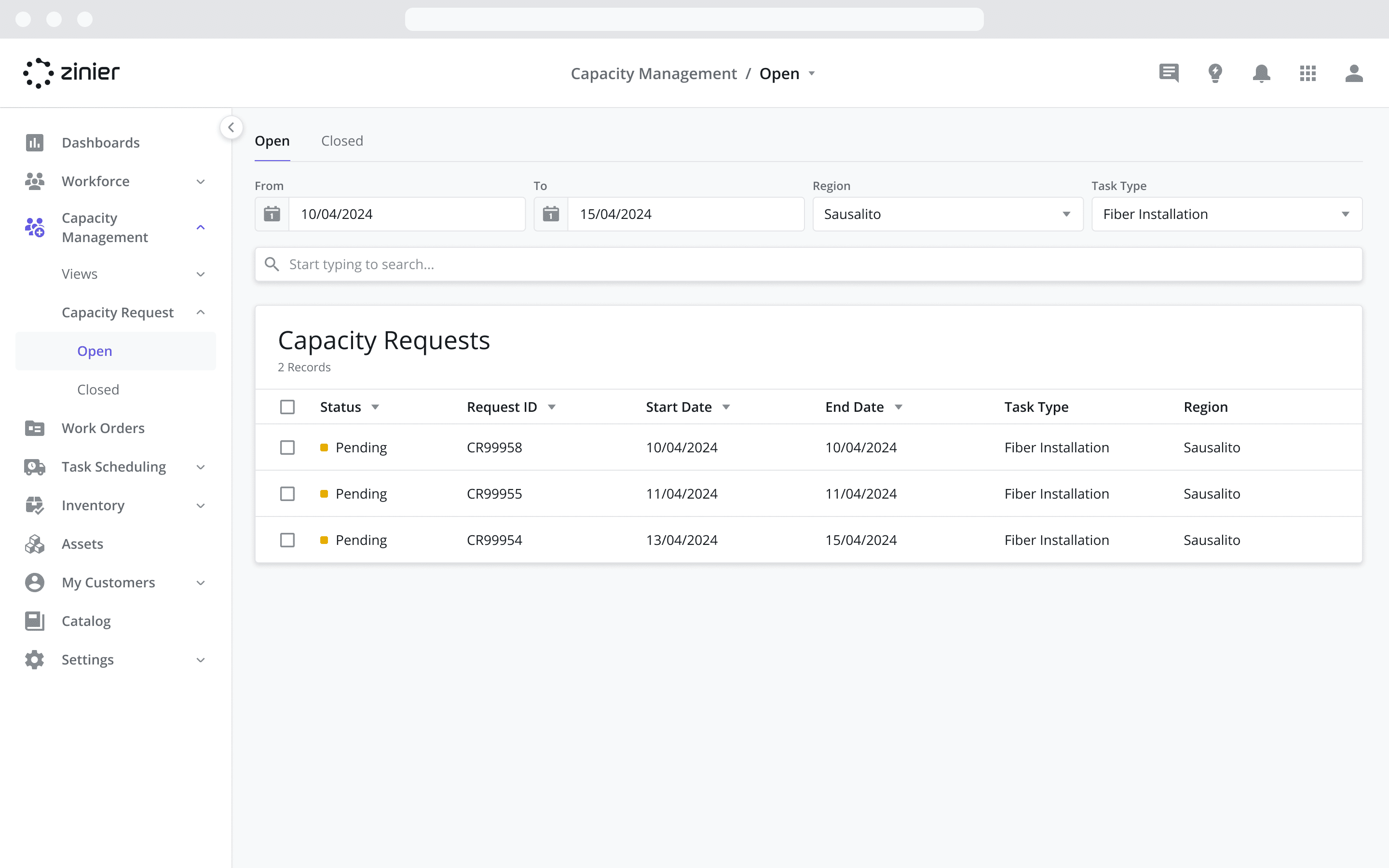
Fulfilling Capacity Requests
Workforce planners and managers can also fulfill Capacity Requests from this module by adding Shift Overrides and Overtime activity to a request. Doing so ensures their workforce is distributed in a manner that allows them to meet expected demand.
Manually added capacity is added to the Available Capacity as long as the Capacity Request is in Pending status. Once the Capacity Request is Cancelled or Completed, the manually added capacity will no longer be added to the Available Capacity and will be removed from the Points View. The reason for this is that when a Capacity Request is completed, the assumption is that the Field Supervisor has moved resources around to increase the Forecasted Capacity.
To fulfill a capacity request, follow the steps below:
Step 1: Open the Capacity Request
Go to the Capacity > Capacity Requests > Open module
Filter by Date, Task Type, and Region using the filters at the top of the page to display requests that have been submitted that match the filter.
Select the request you wish to view / edit by hovering over the row and clicking the “Edit” icon.
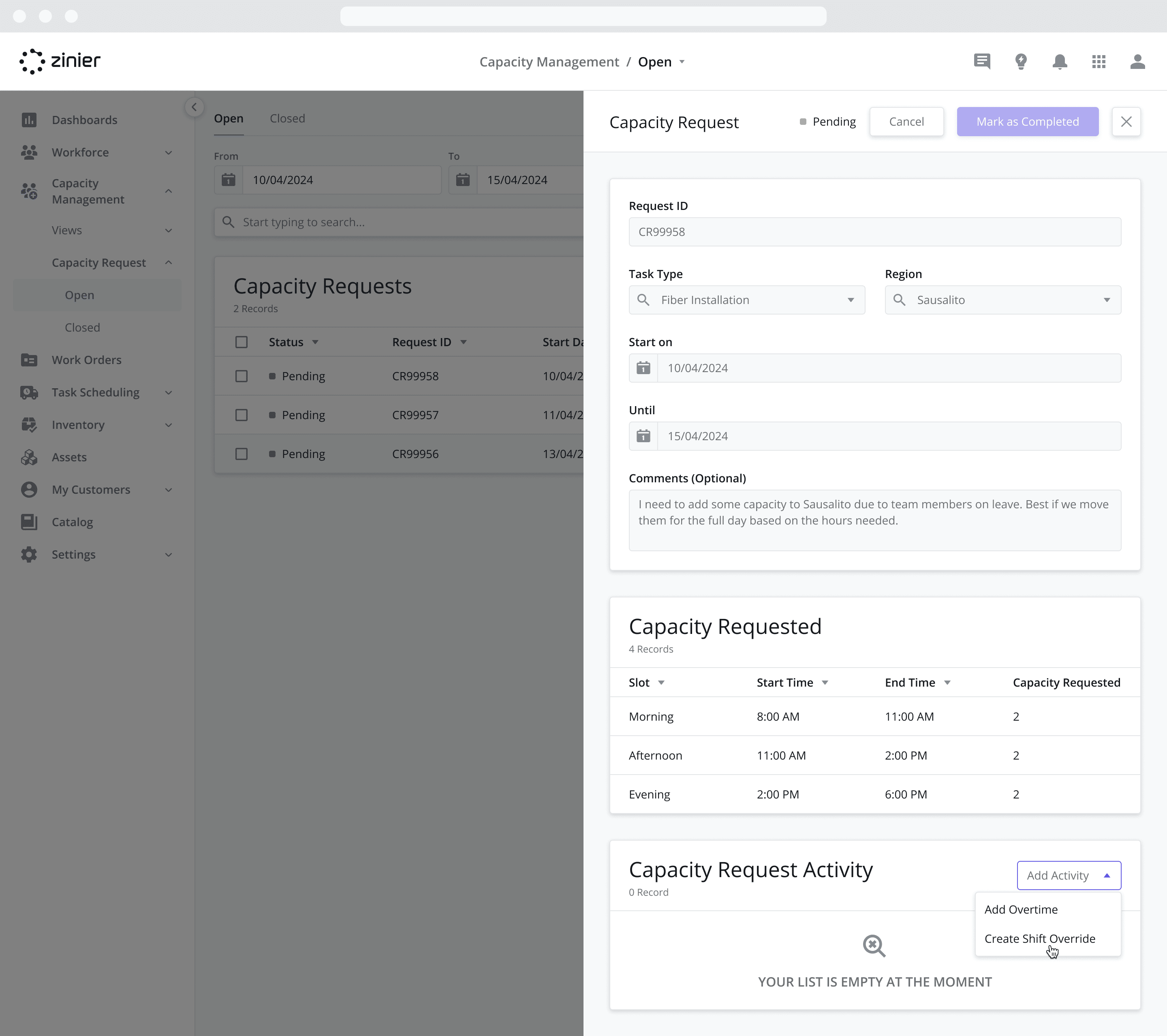
Step 2a: Add Overtime (if required)
Scroll down to the Capacity Request Activity datagrid and click the “Bulk Changes” dropdown menu.
Select “Add Overtime” from the menu to bring up the Overtime sidepanel.
Select the Date you wish the Overtime to start. This should correspond to the date of the request.
Using the From dropdown, select the starting time for Overtime. This is applied to the date selected above.
Using the To dropdown, select the ending time for Overtime. This is applied to the date selected above.
Click the Show Relevant Technicians button to show a list of technicians where the overtime selected is applicable. Note that the list will only show technicians who do not have Shift hours or existing overtime during the selected time frame.
Select the Technicians you’d like the Overtime applied to from the list.
Click the Save button to apply the changes.
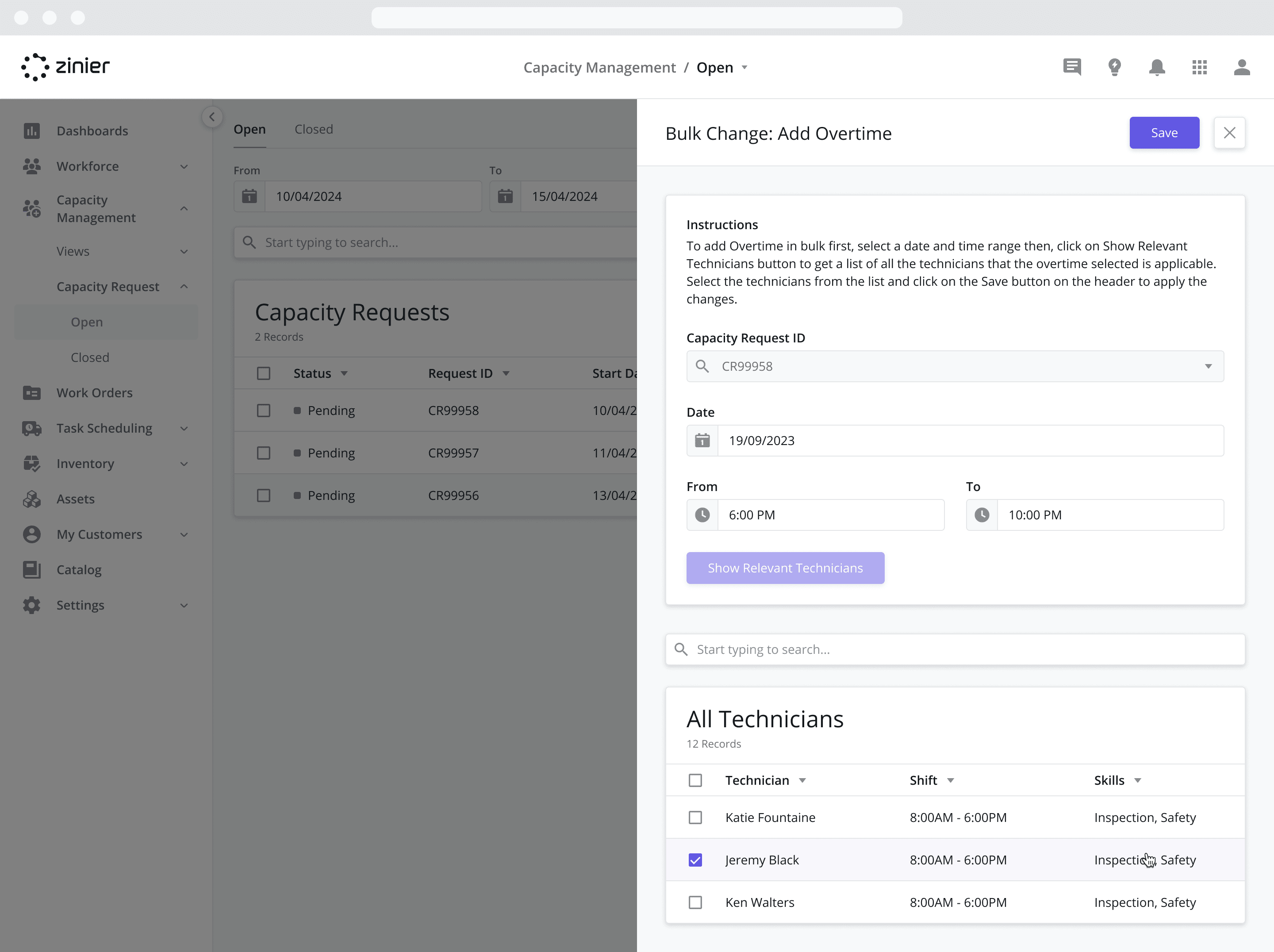
Step 2b: Create Shift Override (if required)
Scroll down to the Capacity Request Activity datagrid and click the “Bulk Changes” dropdown menu.
Select “Create Shift Override” from the menu to bring up the Overtime sidepanel.
Select the Start On date, which is the date you wish the Shift Override to start.
Using the From dropdown, select the starting time for the Shift Override. This time is applied to the Start On date.
Using the To dropdown, select the ending time for the Shift Override. This time is applied to the Start On date.
To repeat the Shift Override so that it recurs on more than one day, enable the “Repeats” toggle and define the recurrence:
Define how often the override will repeat (Daily, Weekly, Monthly, etc)
Or, create a custom recurrence by entering the time unit and a number to define how often it will occur.
Using the Until dropdown, enter the ending date for the recurring Shift Override. After this date, the Technician(s) will revert to their default Shift.
Add and comments you wish to convey about the override to the Comments (Optional) field.

Click the Show Relevant Technicians button to show a list of technicians relevant to the query.
Select the Technicians you’d like the Shift Override applied to from the list.
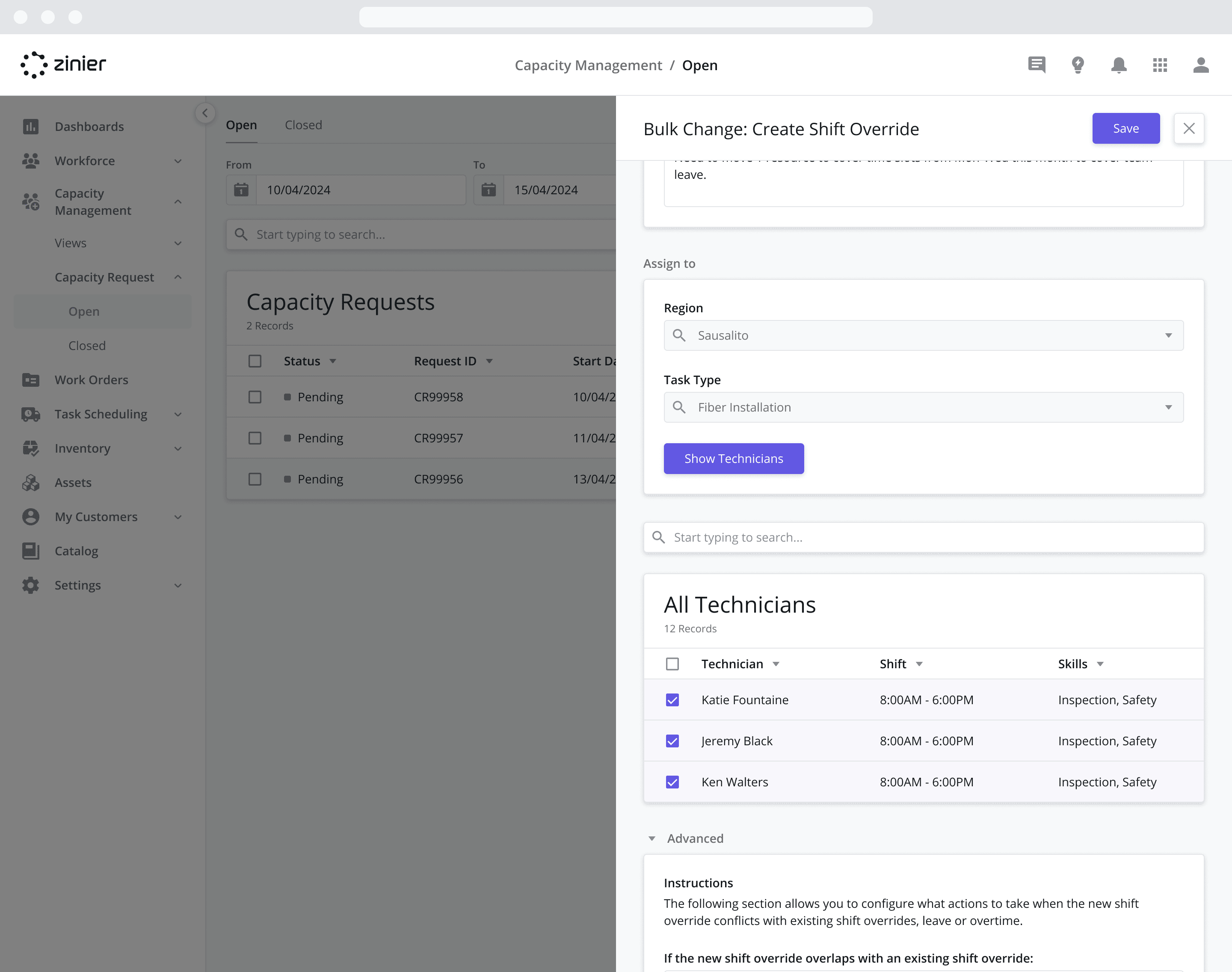
Define how to manage conflicts. Creating a Shift Override can at times overlap with existing Shift Overrides, existing Overtime records, and existing Leave records. The Advanced section allows you to define how to manage such conflicts:
Decide what to do If the new shift override overlaps with an existing shift override. Here you have two options:
Do not create new shift overrides that overlap with existing shift overrides
Replace existing shift overrides with new shift overrides
Decide what to do If the new shift override overlaps with existing overtime. Here you have two options:
Do not create new shift overrides that overlap with existing overtime
Cancel any existing overtime that overlaps with the shift override
Decide what to do If the new shift override overlaps with existing leave. Here you have two options:
Do not create new shift overrides that overlap with existing leave
Cancel any existing leave that overlaps with the shift override
Click the Save button to apply the changes.
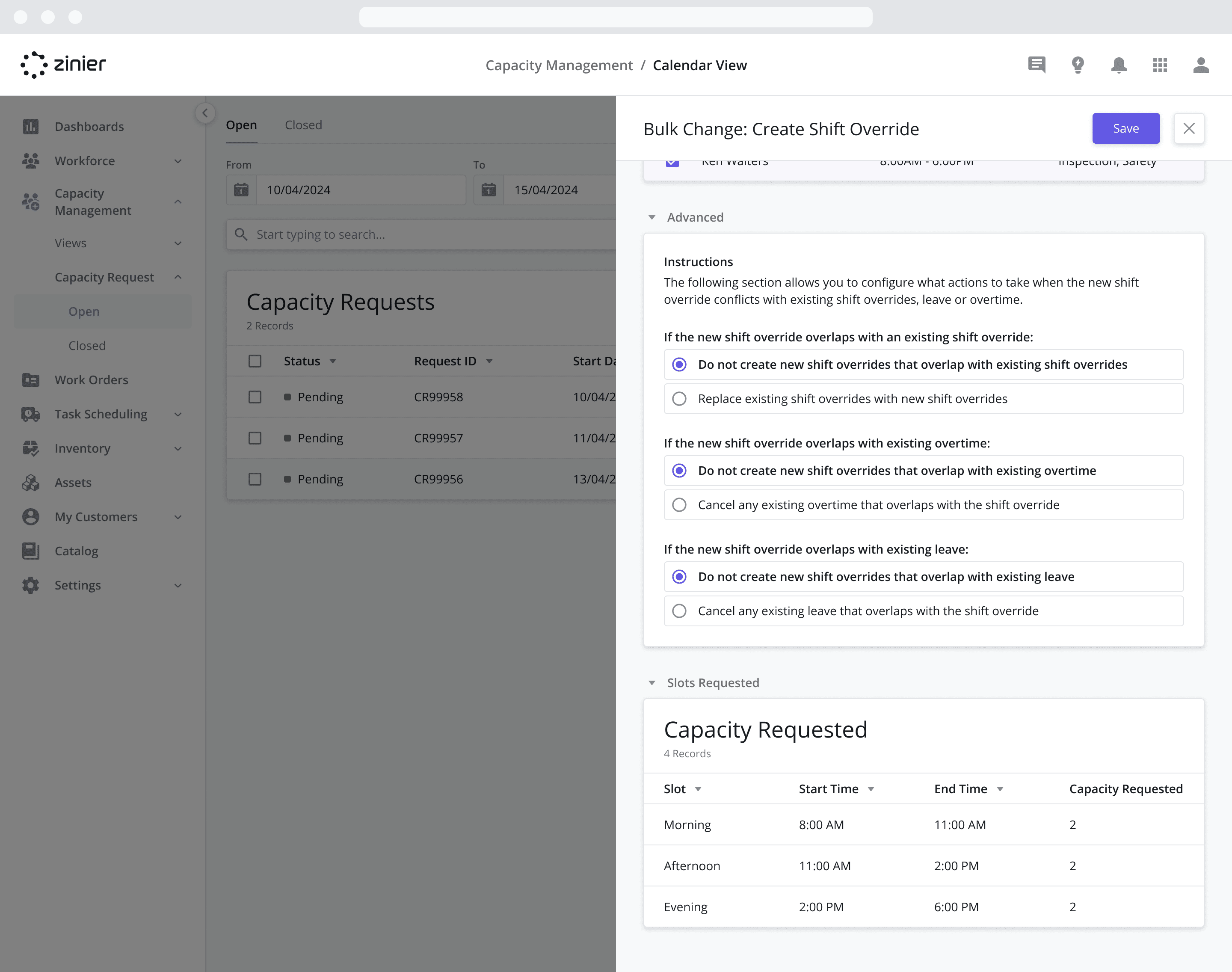
Step 3: Complete the Capacity Request
If you are satisfied that the request has been fulfilled, click the “Mark as complete” button to fulfill the request. Doing so has the following impact:
Once the Capacity Request is Completed, the manually added capacity will be removed from the Points View.
The Capacity Request status change to “Completed” and the record will be moved to the Capacity > Capacity Requests > Closed module.
Overtime and Shift Overrides can also be tied to Capacity Requests when created from the Capacity Calendar View. For more information, go to the Capacity Calendar View page.
